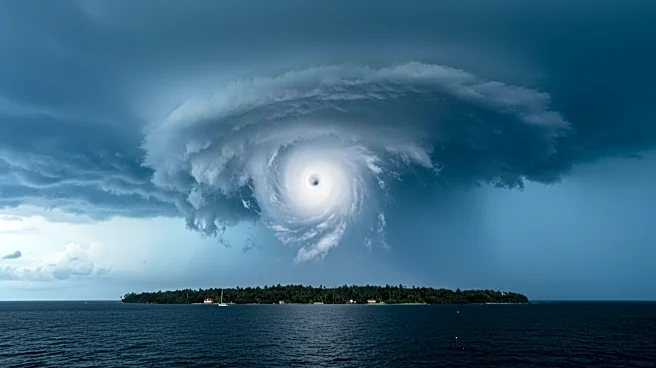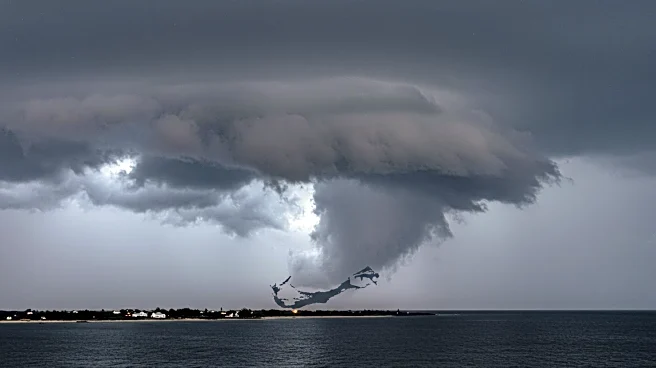What's Happening?
Canada is experiencing its second-worst wildfire season on record, with fires now concentrated in the prairie provinces and Atlantic region, rather than the traditional western provinces. Tens of thousands of people have been evacuated, particularly in Saskatchewan and Manitoba, which account for over 60% of the burned volume. The fires have also strained resources in Atlantic Canada, leading to bans on off-road vehicles and restrictions on outdoor activities in forested areas. Experts attribute the shift to bone-dry conditions exacerbated by climate change, highlighting the widespread risk across the country.
Why It's Important?
The shift in wildfire locations underscores the growing impact of climate change on Canada's environment, affecting regions previously considered low-risk. This has significant implications for emergency preparedness and resource allocation, as provinces like Newfoundland and Nova Scotia struggle to manage the crisis. The fires have also led to increased structural loss, prompting calls for better fire risk management and adaptation strategies. The situation highlights the need for a national approach to wildfire prevention and response, as the threat becomes more pervasive across Canada.
What's Next?
In response to the ongoing crisis, the federal government has initiated a multimillion-dollar funding effort to study wildfire risk and adaptation. This includes examining the legacy of forestry industry practices, urban encroachment, and Indigenous stewardship of forests. Experts anticipate that every year will see significant fires in different parts of the country, necessitating a change in mindset and preparedness. The mild nature of this year's western fire season offers a glimpse into the future, where climate change continues to drive unpredictable and widespread fire risks.
Beyond the Headlines
The current wildfire season in Canada is a stark reminder of the ecological challenges posed by climate change. It highlights the need for integrating Indigenous knowledge and practices in forest management, as well as reassessing urban planning to mitigate fire risks. The situation also calls for a reevaluation of the forestry industry's impact on fire dynamics, as well as increased public awareness and behavioral change to protect homes and businesses from future blazes.











